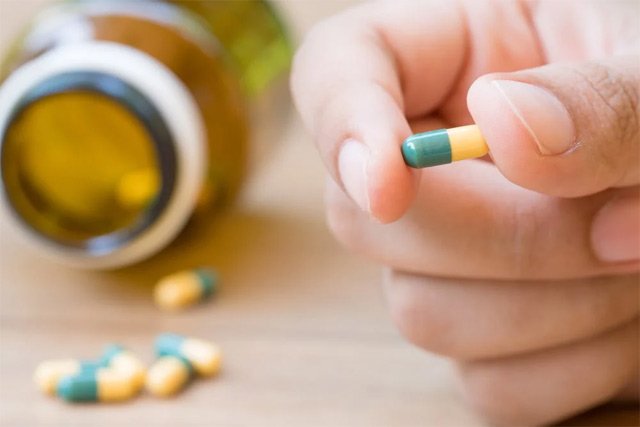Employers conduct random drug tests in today’s workplace due to various factors they deem important, which most likely led you to test positive, raising the question of how long Tramadol stays in your system. Tramadol, its brand name, Ultram, and other drugs all have one thing in common: a half-life. As a general rule, it typically takes 5-9 half-lives for drugs to leave your system.
The active ingredient contained in Tramadol is 50 mg of tramadol hydrochloride, while inactive ingredients include sodium starch glycolate, microcrystalline, colloidal anhydrous, and purified water. Tramadol is available in both immediate and extended-release tablets and capsules and can take 48-76 hours to leave the human body.
Many people use opiates for various reasons, from pain relief to relaxation purposes. This review, while not intended to judge anyone, does expose the harsh truth about Tramadol and its duration in the human body, as well as the time it remains detectable in commonly used drug tests.
How Long Does Tramadol Stay in Your Body?
Physicians often prescribe Tramadol, closely related to Codeine and categorized as an opiate, to treat a variety of pain conditions, from moderate to severe ailments. One of the biggest issues with taking Tramadol is the time it takes to leave your body, coupled with its highly addictive nature.

Science has proven it takes about 1.7 days for Tramadol to leave your body; however, other factors such as length of usage, dosage amounts, age, weight, and health can all impact the time it takes Tramadol to fully leave your system.
Most people can expect Tramadol to be out of their bodies after 48 hours, while some may experience a longer window. Moreover, this doesn’t negate the negative side effects because it can take several days after using Tramadol before the negative feelings subside.
Although Tramadol leaves your body in a couple of days, it can still show up in certain drug tests long after the two-day window. To better understand how this works, it’s important to know about the half-life of Tramadol.
In simple terms, a drug’s half-life refers to half of the time it takes to leave your body. Each drug has a different half-life, and the number can vary. For Tramadol, its half-life is 6.3 to 7.4 hours; therefore, you can expect 12.6 to 14.8 hours for one dose of Tramadol to leave your system. The half-life cycle continues until all traces of Tramadol are gone.
Will Tramadol Show up on a Drug Test?
The time tramadol is detectable in drug tests varies depending on the administered test, but it will show up in several of them. Although there are various cleansing kits available, it’s important to purchase the right detox kit for the drug test you’re taking.
For example, synthetic urine will be ineffective against a hair follicle drug test; therefore, hair and body shampoos are your best option for cases such as this. At best, selecting the right product can be a challenge due to the lack of standardization in drug testing methods and strategies.
Below are four examples of commonly used drug tests:
Hair Test

Certain employers and government entities use hair tests to detect the presence of Tramadol in the body, but it is not the most common drug test in today’s workplace. These tests are highly accurate and can detect drugs in the body for up to 90 days. Many times, employers utilize a hair test when they suspect one of their employees is abusing Tramadol.
On the flip side of the coin, it can take several weeks for Tramadol to show up on a hair test for new users. This is due to the fact it takes 2-3 weeks for Tramadol to enter hair follicles. The downside, once you test positive, it will stay hot for three months afterward.
Saliva Test
Law enforcement and certain employers use a saliva test to detect the presence of recently used drugs. As an illustration of its effectiveness, a saliva test can detect Tramadol within one hour of ingestion, which helps to explain why police officers often use this type of test. Although Tramadol shows up positive within 24 hours of consumption on a saliva test, it fails to detect drug use after this time expires; therefore, many businesses opt for more reliable and alternate testing procedures.
Blood Test
Much like a saliva test, a blood test can show a positive test within 24 hours of using Tramadol. As a matter of fact, this type of drug test is the most accurate for detecting recent drug use in the body. Blood tests for Tramadol also show positive within one hour of digestion, but in the same fashion as a saliva test, it dissipates rather quickly and isn’t effective after the 24-hour window.
In the medical field, professionals often utilize invasive drug tests, and law enforcement employs blood tests when they suspect drivers of drug or alcohol use while driving.
Urine Test
Urine tests are quite common in the workplace and for pre-employment drug screenings. If you’ve been ordered to submit your urine for a drug test, Tramadol can produce a positive result within 2 hours of consumption. If you test positive for Tramadol during a urine test, you can expect it to stay hot for another 48 hours.
While this window is relatively safe for most users of Tramadol, those who consume larger doses can anticipate the toxins to linger around a little longer in their bodies. Additionally, there are certain factors that also contribute to the time Tramadol stays in the body.
Factors That Determine How Long Tramadol Stays in Your System
Tramadol keeps the body active for 24-32 hours, detectable for up to 4 days post-use. Heavy users might extend this to 7 days or beyond. As Tramadol transforms into a strong opioid, its presence lingers longer with increased intake.
Other factors that affect both its detection time and duration within the body include the volume of distribution, rates of clearance, protein levels in the bloodstream, steady-state concentration, and bioavailability, as well as the following:
- The dosage of Tramadol matters. It can influence its impact on your body, increasing bioavailability and making about 75% detectable in typical testing areas.
- Variations in body chemistry and genetics influence how Tramadol spreads in the bloodstream, affecting drug test outcomes. The levels inside and outside cells determine whether the result is positive or negative.
- The proteins that bind in your body are also another factor when it comes to drug screenings. After ingesting Tramadol, your body binds 20% of the drug to proteins, so taking less increases the likelihood of passing a surprise drug test.
- When Tramadol enters the body, it automatically attaches to nerve cell receptors and gets filtered by the kidneys. Those living with kidney disease may require more time for their kidneys to filter and excrete the compounds of Tramadol into their urine and feces to pass a drug test on short notice.
- People who consume drugs on a daily basis are also eliminating them at the same rate; therefore, they achieve a steady state concentration within the body when consumption and elimination rates balance out.
How to Quickly Cleanse Your System of Tramadol

When the boss calls your name for a drug test, it can be a very stressful situation, especially if you’re using your illicit drug of choice. It is vital to stop taking Tramadol and quickly cleanse your body to pass your test. Drinking water combined with a detox kit and eating healthy is the best way to pass your upcoming test.
Below are foods known to naturally detoxify the body:
- Broccoli
- Artichokes
- Kale
- Beets
- Garlic
- Watercress
- Grapefruit
Using Synthetic Urine to Pass a Tramadol Drug Test
In emergency situations, synthetic urine may be your best option; however, where you buy it matters. Always purchase synthetic urine from high-quality vendors with positive customer reviews because there are several imitations on the market that do not contain the active ingredients required to pass a urine test.




